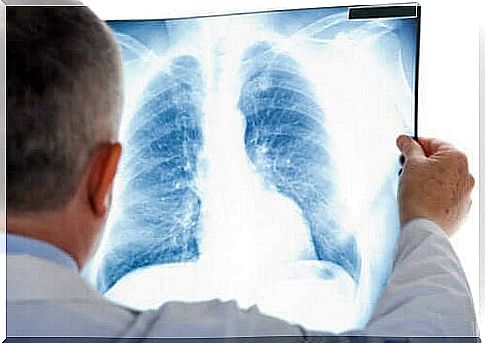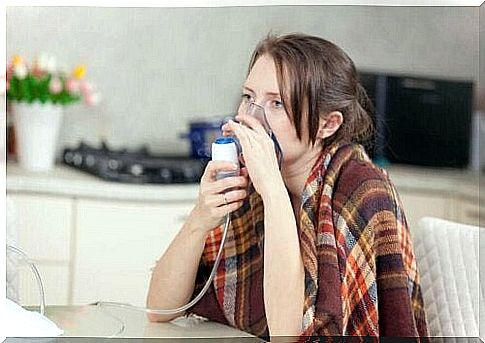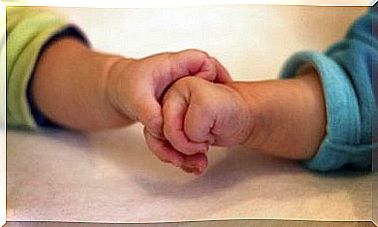What Is Atypical Pneumonia?
When you have atypical pneumonia, the fever is lower than during typical pneumonia. In fact, fever does not appear in all cases of atypical pneumonia. In this case, the cough is dry and one may experience wheezing. Check out other symptoms of atypical pneumonia.

Pneumonia is an infection of the lungs caused by a virus or bacteria. It is actually a term that refers to many different etiologies. We therefore tend to divide it into two groups: atypical pneumonia and typical pneumonia.
The group of atypical pneumonia was first named to refer to pneumonia caused by different and less common germs than those that generate typical pneumonia. However, today this distinction is marked because there are differences at the symptomatic level between the two types of pneumonia.
The main cause of atypical pneumonia is Mycoplasma pneumoniae, also followed by other atypical germs. Epidemics are more frequent in autumn and winter. In this article we tell you everything you need to know about this pathology and how to distinguish it.
What is the cause of atypical pneumonia?
As we mentioned, atypical pneumonia is a lung infection caused by viruses or less common bacteria. It is also known as wandering pneumonia and the vast majority of cases appear between fall and winter.
Although the most common cause of this pneumonia is infection with M. pneumoniae , there are other germs that can cause this condition. The most common are: Coxiella burnetti, Legionela pneumophila, Chlamydia pneumoniae and Chlamydia psitacci.
Typically, atypical pneumonia is milder than typical. However, when it is caused by Legionela, there can be complications and the mortality is higher.
It should be noted that often this type of pneumonia can appear after a cold that lasts more than six or seven days. It can be caused by a cold caused by a respiratory syncytial virus that does not heal properly.

What symptoms does it produce?
Another big difference between atypical and typical pneumonia is the symptomatology. Symptoms will depend, in large part, on the area of the lung where the infection is located. If, for example, the pneumonia is found in the upper part of the lungs, the patient will have more difficulty breathing.
It is very common to experience catarrhal symptoms, such as a fever over 38 ° C and chills. Likewise, one can suffer from pain in the throat or head, and even in the ears or chest. As there is a general malaise, the patient in some cases goes so far as to lose his appetite and may even suffer from vomiting.
It should be noted that the cough seen in patients with atypical pneumonia is a dry cough. This means that it is not accompanied by sputum or phlegm. In addition, breathing is generally difficult and rapid.

How to diagnose atypical pneumonia and how should it be treated?
To diagnose atypical pneumonia, it is essential that the doctor knows all the symptoms. In addition, the latter must perform a complete physical examination, including a pulmonary auscultation. This is how he will be able to recognize the noises made by the patient while breathing.
When it comes to atypical pneumonia, there is usually a particular sound made by breathing, which is called “wheezing”. It is a sound similar to the wind. Sometimes chest x-rays are also taken, as they often show an infection.
Since the majority of the causes of atypical pneumonia are bacterial, antibiotic treatment is usually used. If the infection is not very severe, they are given orally for 7-10 days. It is essential to keep in mind that in some cases atypical pneumonia can be contagious.
This is why it is recommended to avoid any contact and to follow some suitable hygiene measures. When faced with any alarming symptom, it is important to see a doctor to learn about treatment options and avoid the use of over-the-counter antibiotics at all costs.









